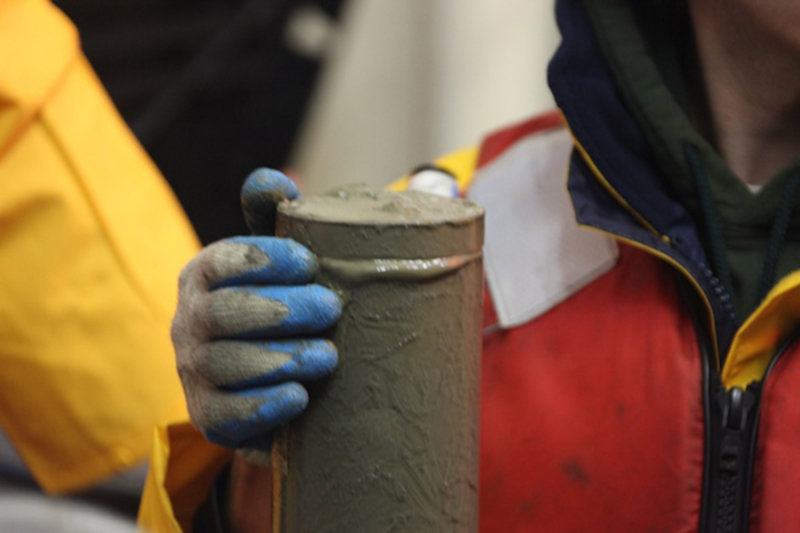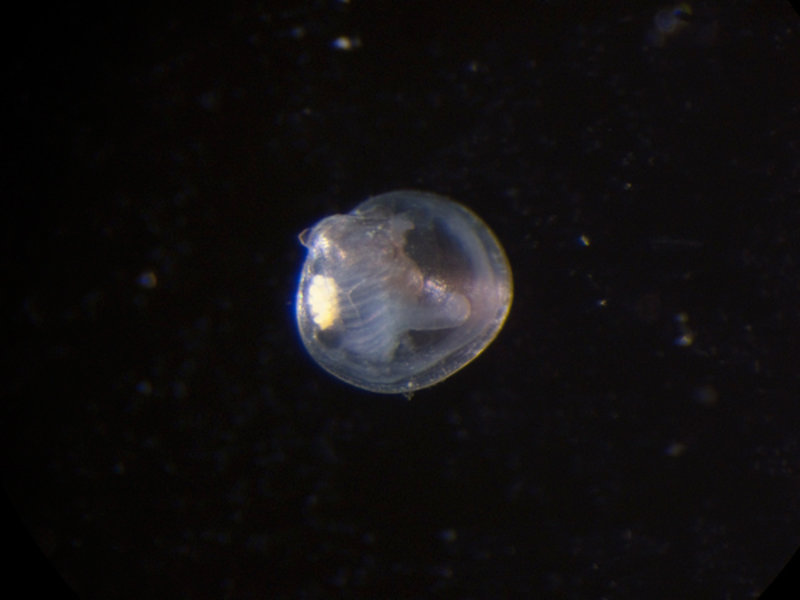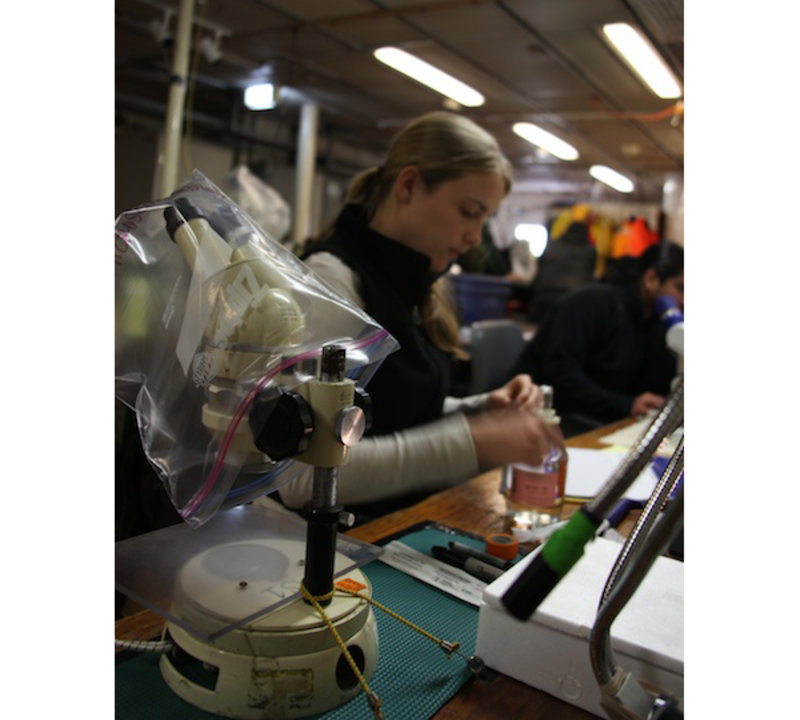
By Christina Tanner, Scripps Institution of Oceanography
March 1, 2010
A great deal of information can be attained from deep-sea mud. Eight mud cores (see previous day’s log regarding multicorer deployment) are divided among the science party. After all is said and done, we will have detailed information regarding the chemistry and biology from the Chilean margin sediments where we sampled.

A core of deep-sea mud sampled at 2,600 meters (8,530 feet). Image courtesy of INSPIRE: Chile Margin 2010. Download image (jpg, 56 KB).
Some cores are preserved for later analyses, but there is a portion of sampling that is completed on board. For example, one of the cores is sorted "live" in the lab to look for animals living in the mud. We use a dissecting microscope because the animals are very small. Plus all living specimens need to be kept on ice since they came from such cold water — 2°C (36ºF). In this case, we found mostly worms, many of which are likely to be new species, as well as a couple of ostracods, an aplocophoran, brittle star, and some small bivalves. These bivalves are of critical importance to my research, so I was very happy when we found them.

This small bivalve is from the deep-sea mud core sample that researchers sorted while on board the research vessel (R/V) Melville. Image courtesy of INSPIRE: Chile Margin 2010. Download image (jpg, 37 KB).

Christina Tanner at work on board the R/V Melville, during the INSPIRE cruise. Image courtesy of INSPIRE: Chile Margin 2010. Download image (jpg, 84 KB).
Bivalves, and many benthic (bottom dwelling) invertebrates, produce larvae which disperse freely in the water column. Yet where these larvae come from and where they go is largely unknown. My goal is to find a means with which we can address these questions.
One way to investigate larval movement is by analyzing the elements incorporated into the shell. Bivalves record past environmental conditions much like tree rings do. I will use this "fingerprint" of past conditions preserved in the shell to infer in which of the distinct water masses above the Chilean margin various species of bivalve develop in as larvae. For example, do the larvae develop at the surface of the ocean or in deep waters? If they stay in deep waters, are they retained within seep environments? Or do they disperse through non-seep environments?
Processing of the mud cores is now complete. We are currently moving at a speed of 1 knot along Segment 2 of the Chile rise in our second search of hydrothermal plumes with a tow-yo CTD (conductivity, temperature, depth) cast. This cast will take a full day so we have split ourselves into four member teams; each team controls CTD operations for four hours.
Listen to members of the INSPIRE crew sing their original composition, "Plumes: Nobody Knows."